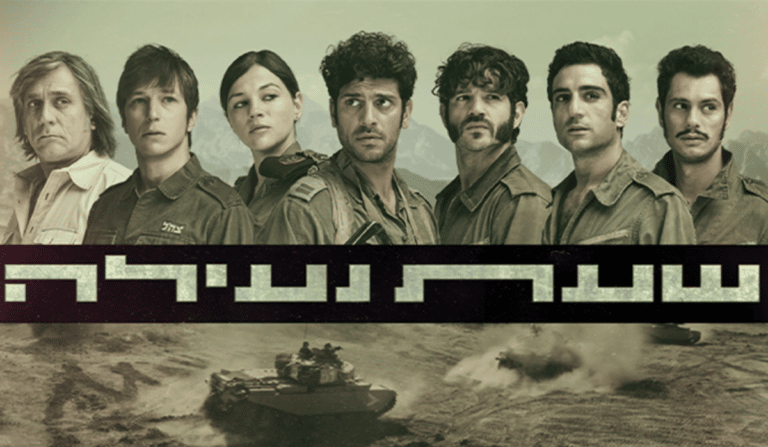
This week’s topic was suggested by Noey Jacobson, content strategist at the Granger Network, member of The Maccabeats, singer-songwriter, and, most importantly, a dedicated reader of “The Weekly.”
A few months back, Noey said to us, “I just watched ‘Valley of Tears,’ and now I realize how little I knew about the Yom Kippur War. Best show on TV right now. Can you please ‘unpack’ it?”
“Valley of Tears,” called “Sh’at Neila” in Hebrew, is named in English for a major battle in the Golan Heights during the war. “Sh’at Neila” refers to the final service of the Yom Kippur fast, when Jewish tradition holds that people’s fates for the coming year are sealed as the gates of heaven close.
Before you read further…wait! This is a spoiler alert. Our team is going to unpack five educational themes from this fascinating series.
1. The “Conceptzia”: Israeli Complacency After the 1967 Six-Day War
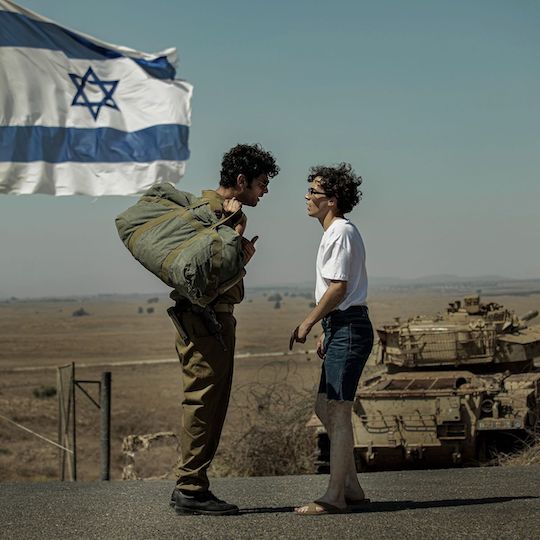
Episode to Focus on: 1 (and the opening of all episodes)
“It was the end of summer, 1973. The truth is, we were in a state of euphoria, convinced we were invincible. Just six years before, Israel did the impossible. In six days, it defeated the neighboring armies of Egypt, Syria and Jordan… We felt like an empire, a miracle.”
In the aftermath of the 1967 Six-Day War, and leading up to the 1973 Yom Kippur War, Israelis had absorbed a mindset which was later called the “conceptzia” (or in English, the conception).
This mindset was based on the idea — which would soon prove false — that after Israel’s decisive victory against Egypt, Syria and Jordan in the Six-Day War, Arab countries would not dare start another war against the Jewish state.
Many described Israeli society during this time as having bravado and a sense of invincibility. Yaron Zilberman, director of “Valley of Tears,” said, “The Six-Day War was a fantasy. Israel felt immune and militarily superior.”
Abraham Rabinovitch, author of The Yom Kippur War: The Epic Encounter That Transformed the Middle East, summarized it this way: “Israel had fallen victim to its own victory in 1967.”
As Israeli society, including the Israel Defense Forces (IDF), basked in its overconfidence, the narrative goes, Egypt and Syria prepared to attack. This theme of Israeli complacency leading up to the war is highlighted at the start of each episode through footage conveying Israelis’ elated, post-1967 state of mind.
In Episode 1, the character Avinoam, a soldier in the intelligence unit at the Mount Hermon outpost in the Golan Heights, hears a Syrian broadcast that convinces him the Syrians will launch an attack. Avinoam tries to warn the commanders at the base, but his messages are ignored as the war quickly unfolds.
Discussion Question: Listen to the Yom Kippur War episode of the “Unpacking Israeli History” podcast, then discuss the five questions listed in this guide.
2. The Israeli Black Panthers
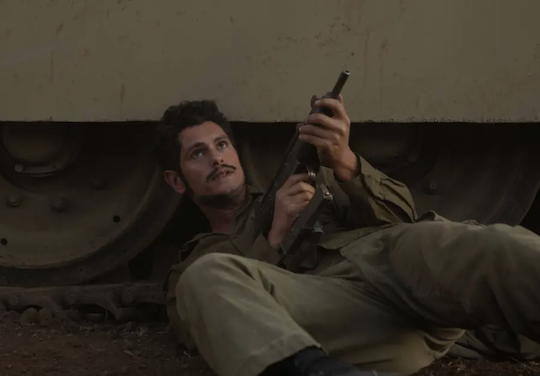
Episodes to Focus on: 1 and 2
“Meanwhile, in Jerusalem, a protest movement grew in the margins, fighting to put an end to three decades of oppression and discrimination. They called themselves the Black Panthers, inspired by the other Panthers in America. They swept Israel up in a wave of protests and rage.”
Three prominent characters in “Valley of Tears” are the Moroccan-Israeli soldiers Marco, Alush and Malachi, members of the Israeli Black Panthers protest movement.
Inspired by the American group of the same name, the Black Panthers movement was founded in 1971 in Jerusalem. According to historian Anita Shapira, the group “organized stormy demonstrations under slogans demanding an end to discrimination by the Ashkenazim against the mainly North African Mizrahim.”
“Valley of Tears” co-creator Ron Leshem explained in an interview with JewishBoston.com, “By 1973, the second generation of Jews from Iraq, Syria and Morocco was coming into their own political awareness. They were no longer willing to accept police brutality or racism.”
In the show, although all three Moroccan soldiers are part of the Black Panthers movement, they relate to their military service in different ways. While Alush is resolute in his commitment to fight for Israel during the war, Marco considers defecting from the IDF over discrimination he and his family experienced and criticizes Alush as a “wannabe Ashkenazi.”
Malachi, who is arrested for throwing a Molotov cocktail into an empty car at a Black Panthers protest, is so committed to fighting for Israel during the war that he escapes jail in order to rejoin his unit in the battle.
According to Professor Paula Kabalo, chair of the Azrieli Center for Israel Studies at Ben-Gurion University of the Negev, these characters’ complex position of passionately fighting for Israel on the one hand, while protesting against the government and its policies on the other hand, is grounded in historical reality.
The Israeli Black Panthers “did not consider there to be a contradiction between being a patriotic Israeli and a harsh critic of Israel’s government,” Kabalo said in an interview. “The protest of the Panthers was a protest of Israeli citizens who wanted to belong. They were not against the state, they wanted to be a part of the state.”
Kabalo explained that the Israeli Black Panthers emerged for many reasons, including seeing their families continue to endure harsh living conditions as Israel’s economy was generally booming and encountering the ideas of the youth counterculture movement in America.
Discussion Question: Put yourself in the shoes of the character Marco, a Mizrahi Jew who is a member of the Black Panthers movement, a protest movement that fought for social and economic equality for Sephardi and Mizrahi Jews in Israel during the 1970s. You are part of a movement demanding an end to the discrimination you have experienced in Israel, yet you are still risking your life to defend the Jewish state. How does this make you feel?
3. The Human Side of the War
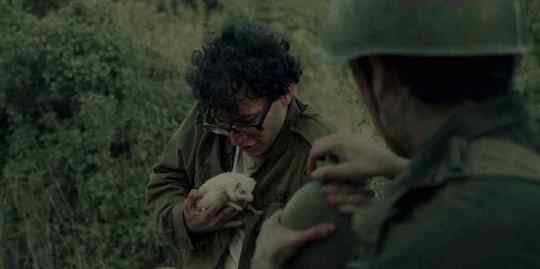
Episode to Focus on: 4
“If we ever have peace, come to Damascus. I’ll show you the city.”
In addition to dramatizing the events on the battlefield, “Valley of Tears” also features several love stories showing the human side of the war.
The three Israeli strangers who share a car ride to the battlefield — the journalist Meni, the Black Panthers member and soldier Malachi and the female officer Dafna — each risk their own lives in search of their loved ones.
Meni desperately tries to reunite with his son Yoni, Malachi seeks to join his best friends who are fighting in the war, and Dafna is searching for the daring soldier Yoav, her boyfriend.
In one scene from Episode 4, Arabic-speaking Avinoam meets a young Syrian soldier who offers to show him around Damascus after the war. The two speak about their hometowns and families in a brief moment of human connection across enemy lines.
Discussion Question: Choose one of the examples of personal stories highlighted above. Why does this story resonate with you? Which character(s) in the story do you relate to?
4. How Israel Turned the Tide of the Yom Kippur War
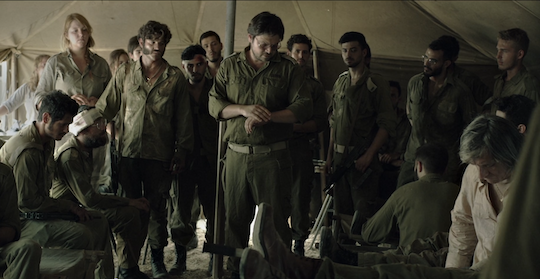
Episodes to Focus on: 8 – 10
“I can’t overstate this. This battle is going to be one of the most important in this war. It will be the decisive battle on which this country will rise or fall.”
“Valley of Tears” tells the story of a war that was catastrophic for Israel, but one in which Israel ultimately made a remarkable comeback.
Yom Kippur, the Day of Atonement, is the holiest day of the year for Jews. On this day, Jews around the world pray in synagogue, repent and refrain from eating and drinking. In Israel, the roads are empty, stores are closed and the airport is shuttered.
This was the scene in Israel on October 6, 1973 when the war broke out. Sirens blared across the country, catching the citizens of Israel off-guard and unprepared. Men praying in synagogue were called to immediately leave and prepare to go to war as Israel was under attack.
Once the war began, it became clear that Israel was tremendously outnumbered in both troops and ammunition. This is powerfully conveyed in “Valley of Tears,” as the Israeli soldiers are depicted driving into a sea of Syrian tanks.
With hundreds of soldiers dying per day at the start of the war, the fear of losing both the war and the country became real for Israeli citizens and their government.
But as reserve soldiers were mobilized around the country, the Jewish state began to push back. Nearly one week into the war, then-U.S. President Richard Nixon agreed to send Israel a massive shipment of arms and supplies.
With new supplies now flowing in, Israeli tanks pushed back against Egypt and Syria. By the end of the war, Israeli tanks were within miles of Cairo and Damascus. According to Rabinovitch, Israel’s comeback came from what he called “the deepest layers of the nation’s being” and the will to survive.
However, this came at a massive price for both Israelis and Arabs. The war left more than 2,500 Israeli soldiers killed and thousands more wounded. Arab casualties numbered more than 8,000 dead and almost 20,000 wounded, though some estimates of Arab casualties claim that the real losses were twice that.
Discussion Question: Watch our video Yom Kippur War: How Israel Turned the Tide and discuss the questions listed below the video.
We also recommend the following episodes from the “Israel Story” podcast about the battle of Tel Saki (one of the most critical battles of the war) for further learning and discussion: Part 1 and Part 2.
5. How the Yom Kippur War Changed Israel
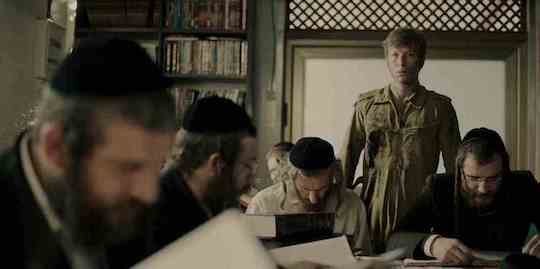
Episode to Focus on: 10 (Post-Credits)
“Most families have some story — it’s a brother, it’s a sister, it’s an uncle, it’s a father. We all have these stories.” — Yaron Zilberman, director of “Valley of Tears,” on how all of Israeli society was affected by the Yom Kippur War
In a final scene after the credits, a severely-wounded Yoni is depicted walking in a haredi neighborhood in Jerusalem. Even though the army uniform Yoni is wearing is stained with blood, no one in the crowded area pays attention to him.
As Yoni walks into a beit midrash (house of study), an old man, identified by his study partner as Meni, looks up at his son, who smiles back at him. Previously a secular journalist, Meni appears to have transformed into a haredi Orthodox Jew.
Although this scene is enigmatic on multiple levels, it is clear that Meni changed dramatically after the war, illustrating the profound impact the conflict had on Israeli society as a whole.
Historian Shapira explained how the Yom Kippur War was a watershed moment in both Israeli and Middle Eastern history.
“On the eve of the Yom Kippur War, Israel was profoundly complacent, and as a consequence of the war, this complacency turned into depression,” she wrote. “An entire nation mourned the thousands of fallen and wounded and sank into a national trauma whose traces did not dissipate for decades.”
Shapira added that faith in Israel’s political leadership, dominated by the Labor Party since the country’s founding, “was now irretrievably lost,” while faith in Israel’s military leadership was also “shaken.”
Similarly, following the conflict, Israeli archaeologist and soldier Yigal Yadin explained, “This was the first war in which fathers and sons have been in action together. We never thought that would happen. We, the fathers, fought in order that our sons would not have to go to war.”
A nation whose people had come to rely on their own, immense military strength — which had been on display in the 1948 War of Independence and 1967 Six-Day War — turned its attention inward. In some instances, this meant searching for something bigger than themselves and the state. For some Israelis, it was the search for God which provided the meaning they sought after 1973.
Discussion Question: Watch the final scene of “Valley of Tears” after the credits. Share what you think is happening in this scene and what you think it means.
Originally Published Feb 1, 2021 07:50PM EST


